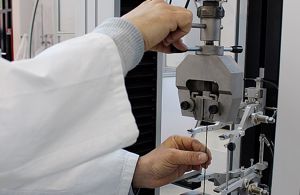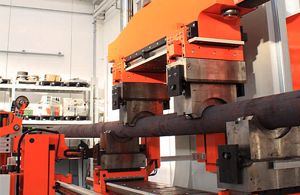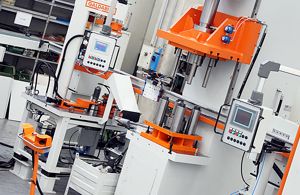-
Product Lines
Material testing machines for quality control

Automatic straightening machines for shafts, profiles

Hydraulic presses, Trimming beading and Automatic production lines

- Company
- Service
- Calibration
- Community
- Contacts
- Library
ASTM E345, DIN 50154, ASTM E517, ASTM E646
Metal sheets for stamping operations, commonly with thicknesses from 0,1 to 3 mm, need to have features giving plastic ductility on the material and at the same time high mechanical strength. Anisotropy and hardening values, known as "r + n", provide important information on material properties; the n value indicates material work hardening during plastic deformation, while the r value describes the vertical anisotropy.
Manufacturing industries has to process a material with these kind of properties as to shape metal sheets in more and more special forms and at the same time to ensure that the finished product thickness is uniform over its entire surface. The preparation of the specimens consists in obtaining 3 specimens from coil; along the rolling axis, at 45° and 90°, to average test values. Specimens can be “dog-bone” or striped shaped. The Standard foresees a width of 12.5 or 20 mm of the calibrated section. It is preferred to use the 20 mm size to protect the crystalline structure of the material.
Specimens are obtained by:
The test requires two extensometers; one for measuring longitudinal deformation and the other for transversal deformation. Semi-automatic or fully automatic mechanical extensometers or contactless systems, as Video Extensometer, are available. The most suitable grips are both wedge grips or hydraulic parallel closing heads. It is advisable to provide adjustable centering devices to assure the perfect axiality of the specimens during test.
Galdabini has already developed this test in 1980 for the Fiat Research Center, until then Erichsen test was commonly used, which was considered too empirical with the new needs of industry.